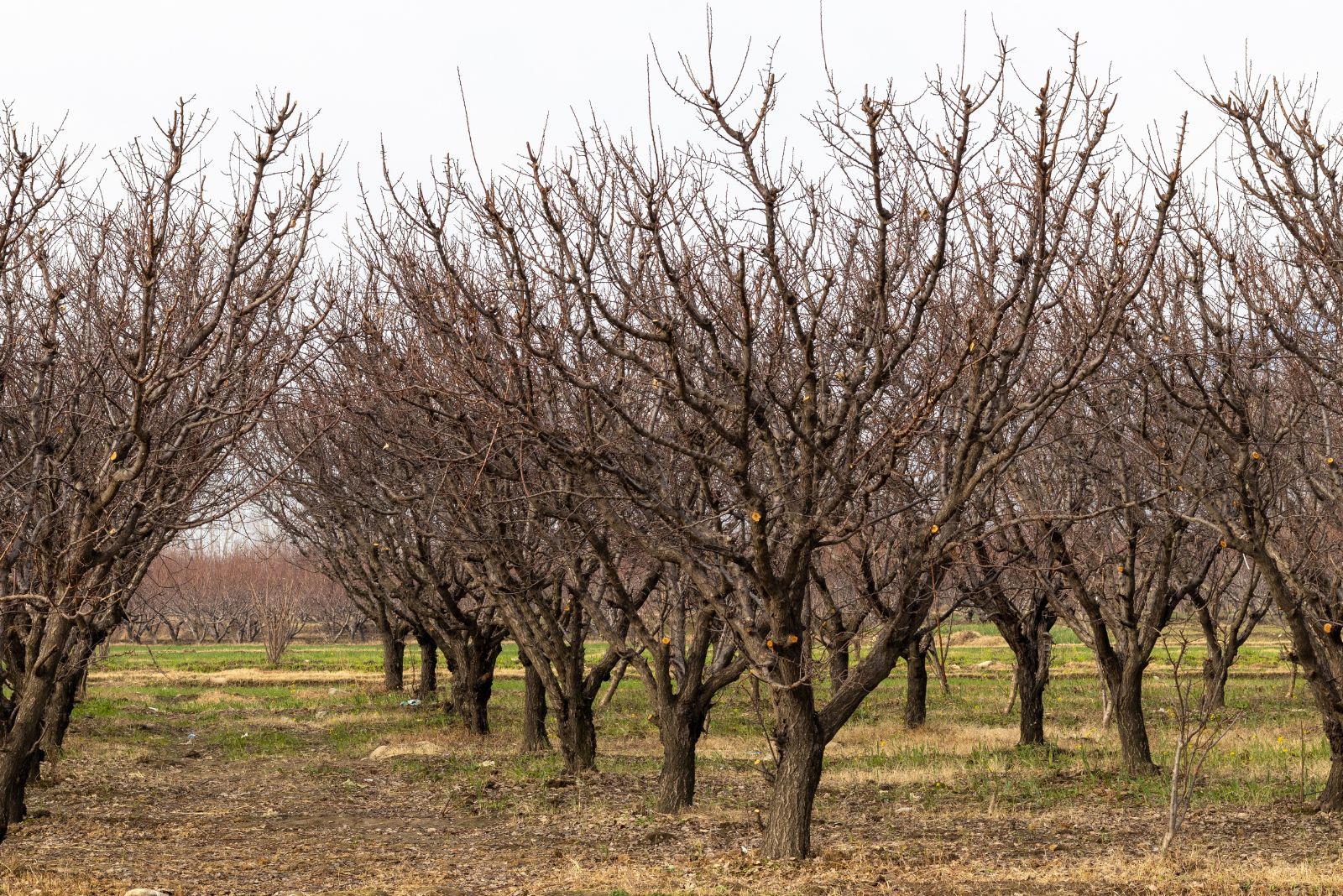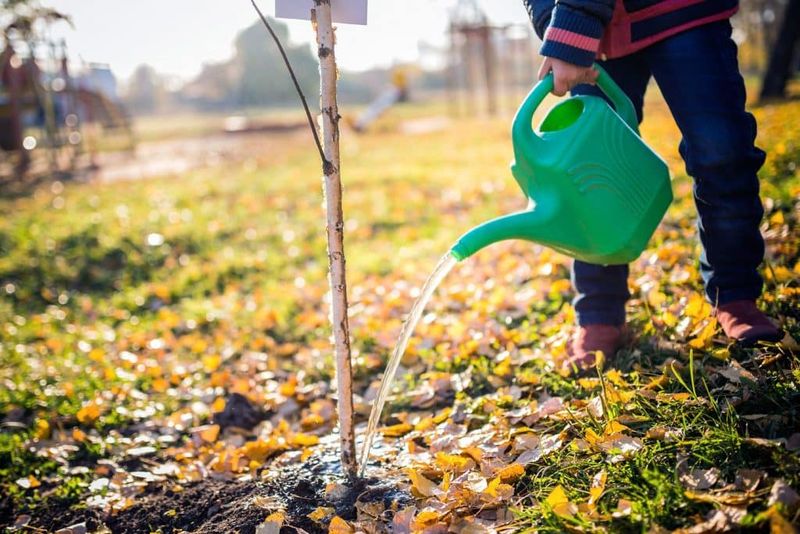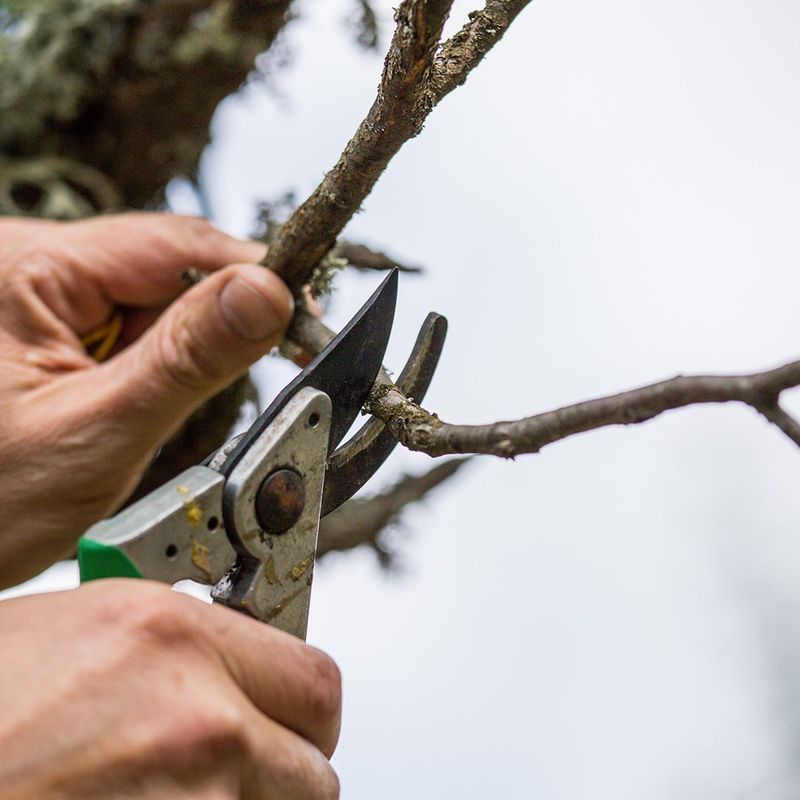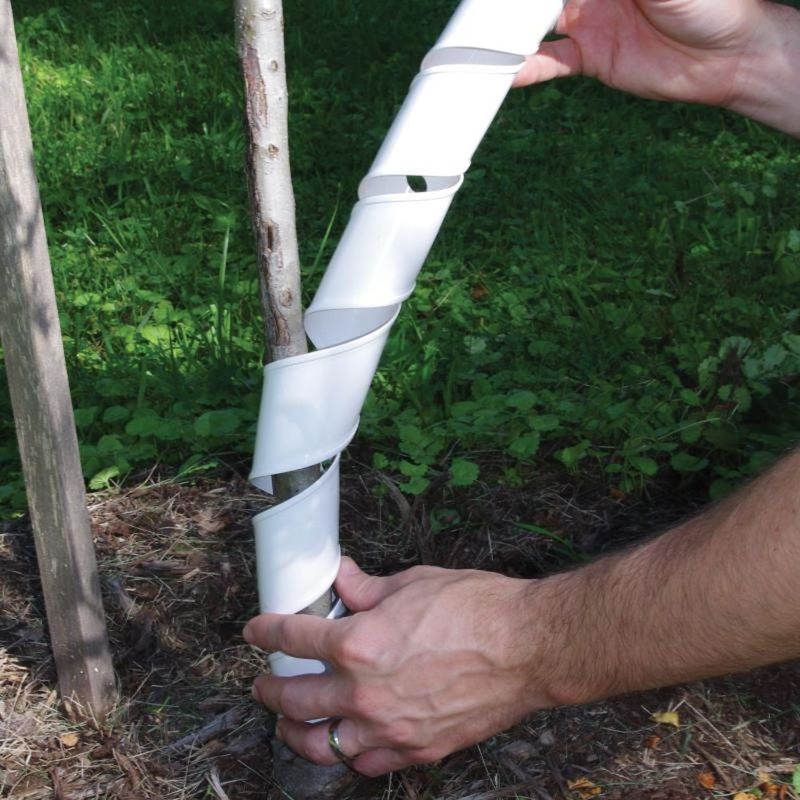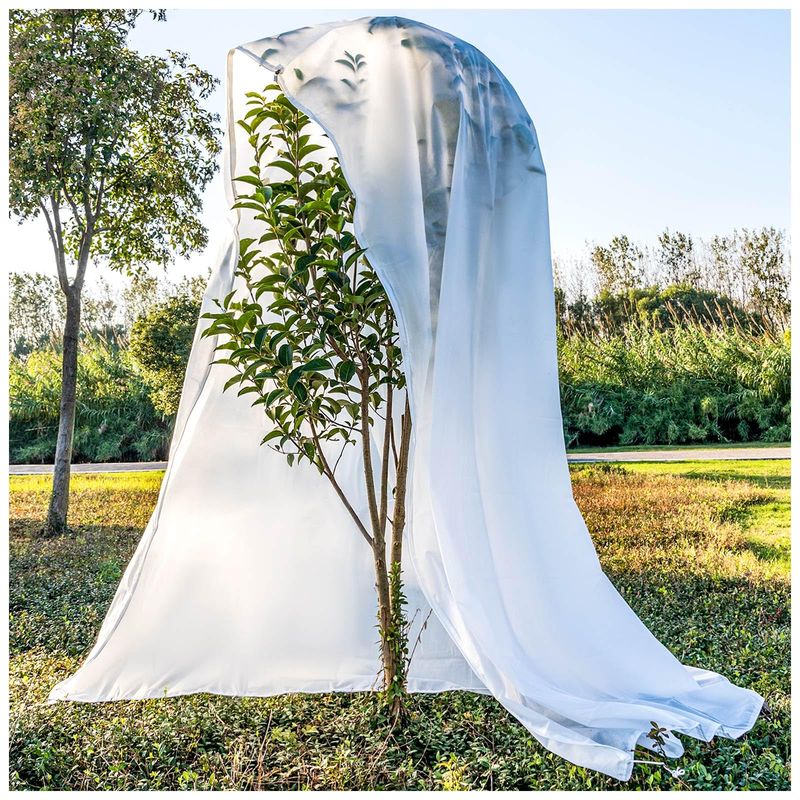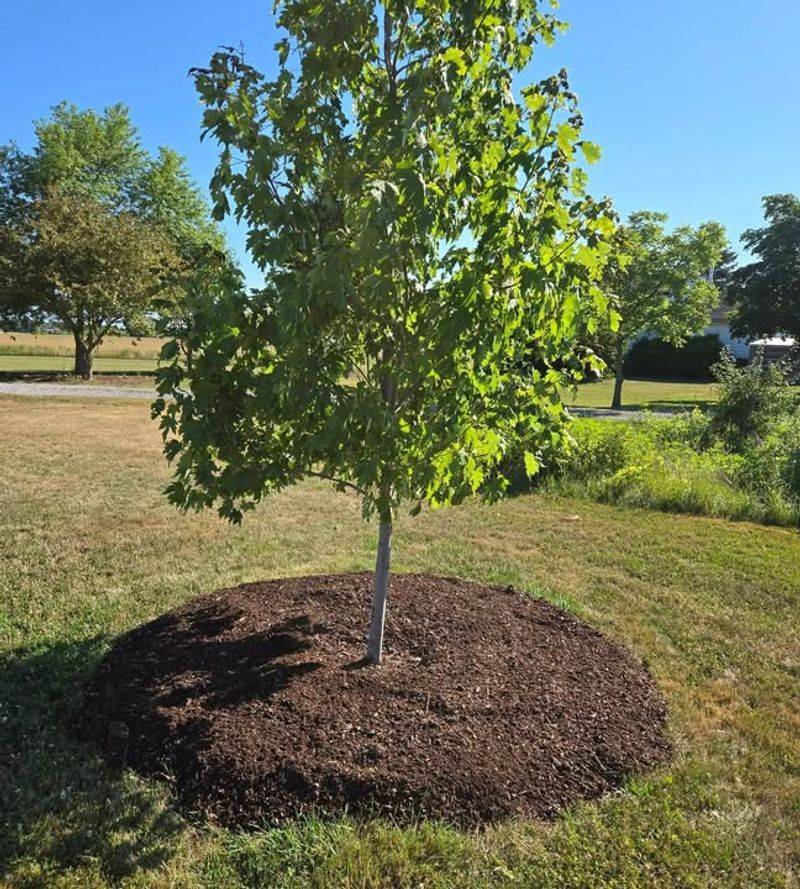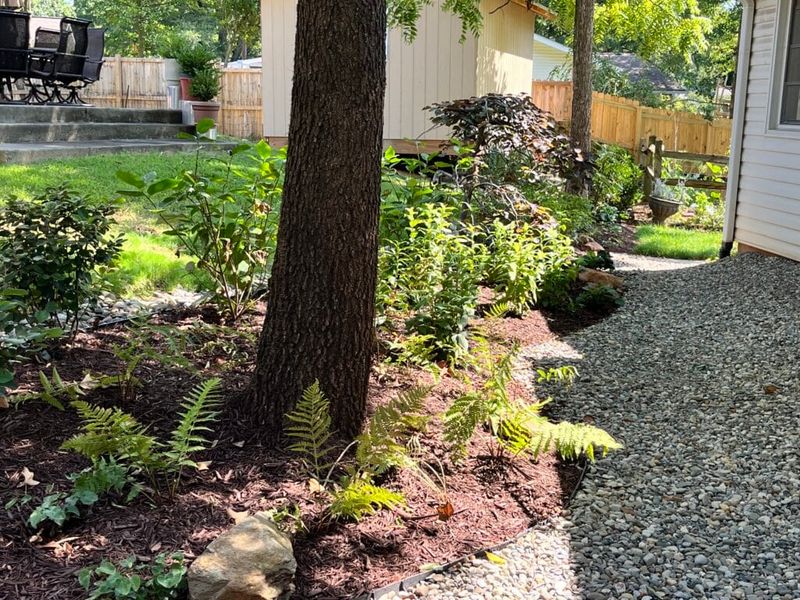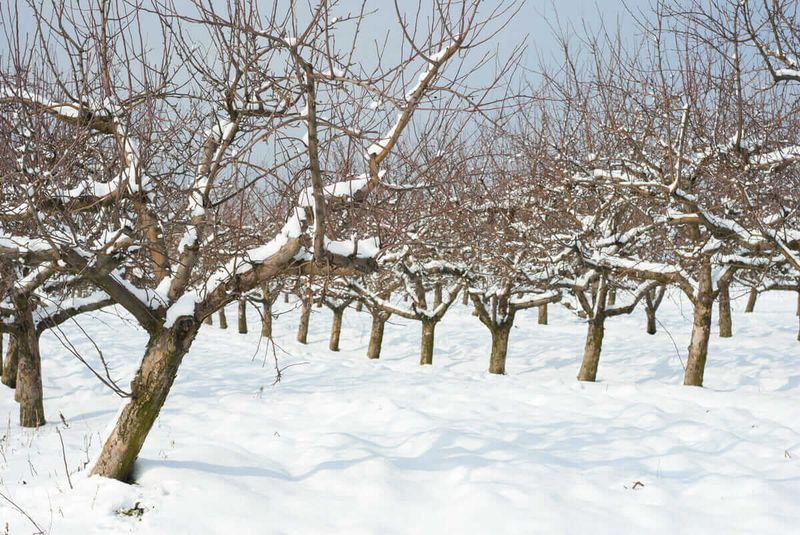December frost can strike Georgia fruit trees hard, leaving buds and branches vulnerable when the cold bites.
Gardeners know that a sudden freeze can undo months of care in a single night.
Taking action early helps protect trees, preserve fruit potential, and keep plants strong through the rest of winter.
Simple steps can shield delicate buds, reduce damage, and give trees a fighting chance until warmer days return.
Preparing now turns a potential disaster into manageable care, keeping Georgia orchards and backyard fruit trees healthy and ready to thrive in the spring.
1. Water Your Trees Deeply Before Cold Snaps
Moist soil holds heat much better than dry ground, creating a natural insulation system for your tree roots.
When you water deeply a day or two before expected frost, you’re essentially giving your trees a thermal blanket from below.
The water absorbs heat during the day and releases it slowly at night, keeping root zones several degrees warmer.
Focus on watering the entire area under the tree canopy, not just near the trunk.
Your fruit tree’s feeder roots spread wide, often extending beyond the drip line of branches.
Give each mature tree about 10-15 gallons of water, applied slowly so it soaks deep into the soil rather than running off.
Avoid watering if temperatures will stay below freezing for extended periods, as this can create ice around roots.
Check your local weather forecast and time your watering for maximum benefit.
Young trees need special attention since their root systems haven’t developed the same cold tolerance as established trees.
Well-hydrated trees also resist winter damage better overall.
Drought-stressed trees enter winter already weakened, making them more susceptible to frost injury, bark splitting, and disease.
2. Apply A Thick Layer Of Mulch Around The Base
Think of mulch as a cozy winter coat for your tree’s roots.
A 3-4 inch layer of organic material like wood chips, pine straw, or shredded leaves creates an insulating barrier that moderates soil temperature fluctuations.
When frost threatens, this protection becomes crucial for keeping roots healthy and active.
Spread mulch in a circle extending at least three feet from the trunk in all directions.
For larger trees, cover the entire root zone if possible.
Leave a few inches of space right next to the trunk to prevent moisture buildup and discourage rodents from nesting against the bark.
Pine straw works particularly well in Georgia since it’s readily available and breaks down slowly.
Wood chips are another excellent choice, adding nutrients as they decompose.
Avoid using fresh grass clippings or leaves in thick layers, as these can mat down and prevent water penetration.
Mulch doesn’t just protect against cold, it also retains moisture, suppresses weeds, and improves soil quality over time.
Replenish your mulch layer each fall before frost season arrives.
Properly mulched trees show less stress and recover faster from occasional cold damage.
3. Prune Away Dry Or Damaged Branches
Dry wood on your fruit trees acts like a highway for disease and pests, especially when frost damage opens up new wounds.
Walking around your trees with pruning shears before December helps you identify and remove problem branches while the tree structure is clearly visible.
Without leaves in the way, you can spot broken limbs, crossing branches, and areas with signs of disease.
Focus on removing completely dry wood first, cutting back to healthy tissue.
Look for branches that show no green under the bark when you scratch lightly with your fingernail.
Make clean cuts at a slight angle just above a bud or lateral branch to promote proper healing.
Avoid heavy pruning right before frost season, though.
Major pruning stimulates new growth, and tender new shoots are extremely vulnerable to cold damage.
Save significant shaping and thinning for late winter when the worst frost danger has passed but before spring growth begins.
Sterilize your pruning tools between cuts with rubbing alcohol or a bleach solution.
This simple step prevents spreading diseases from one branch to another.
Proper fall pruning improves air circulation, reduces disease pressure, and helps your trees enter winter in the strongest possible condition.
4. Wrap Young Tree Trunks With Tree Guards
Young fruit trees face a special winter danger called sunscald, where sunny winter days warm the bark, then freezing nights cause it to crack and split.
Tree wraps or white plastic guards reflect sunlight and keep bark temperatures more stable.
Trees under five years old benefit most from this protection since their thin bark hasn’t developed the same resilience as mature trees.
Start wrapping in late November before the first hard freeze.
Use commercial tree wrap, burlap strips, or white plastic tree guards designed for this purpose.
Begin at the ground and spiral upward, overlapping each layer by about half.
Cover the trunk up to the lowest branches, securing the top with tape or twine.
White or light-colored materials work best because they reflect heat rather than absorbing it.
Avoid dark wraps that can actually make temperature swings worse.
Check wraps periodically throughout winter to ensure they haven’t loosened or trapped moisture against the bark.
Remove tree wraps in early spring once frost danger passes.
Leaving them on too long can trap moisture and create hiding spots for insects.
This simple protective measure dramatically reduces bark damage and helps young trees establish themselves successfully through those vulnerable first winters.
5. Cover Small Trees With Frost Blankets Or Sheets
Frost blankets can save your smaller fruit trees when a particularly harsh cold snap is forecast.
Dwarf varieties, newly planted trees, and young citrus especially benefit from this extra layer of protection.
The fabric traps heat radiating from the soil and creates a microclimate several degrees warmer than the outside air.
Use commercial frost blankets, old bedsheets, or burlap rather than plastic sheeting.
Fabric breathes and allows moisture to escape, while plastic can trap humidity and actually damage foliage when it touches leaves.
Drape the material over the entire tree, extending it all the way to the ground to trap the most heat.
Support the cover with stakes or a frame so heavy material doesn’t break branches.
Secure the edges with rocks, bricks, or landscape staples to prevent wind from blowing the cover off during the night.
For extra protection during severe freezes, you can use multiple layers or add an outer layer of plastic over fabric.
Remove covers during the day when temperatures rise above freezing so trees can receive sunlight and air circulation.
Leaving covers on too long can weaken plants and promote fungal growth.
Keep frost blankets clean and stored properly so they’re ready for the next cold warning.
6. Stop Fertilizing By Late Summer
Timing your last fertilizer application correctly makes a huge difference in frost tolerance.
Fertilizing too late in the season pushes trees to produce tender new growth that won’t have time to harden off before cold weather arrives.
That soft, vulnerable tissue becomes frost’s first victim when December temperatures plummet.
Georgia homeowners should stop feeding fruit trees by mid-August at the latest.
This gives trees time to slow their growth naturally and redirect energy toward strengthening existing wood and roots.
Trees that enter dormancy gradually develop better cold resistance than those still actively growing when frost strikes.
Late-season nitrogen fertilizer is particularly problematic since it specifically encourages leafy growth.
If you applied fertilizer in September or October, don’t panic, just be extra vigilant about other protective measures.
Your trees will likely be fine, though they might be slightly more frost-sensitive than they would be otherwise.
Focus fall care on watering and mulching rather than feeding.
Trees naturally slow down as days shorten, and working with this rhythm rather than against it produces healthier, more resilient plants.
Come spring, you can resume fertilizing once new growth begins and frost danger has passed completely.
Proper timing strengthens trees for whatever winter throws their way.
7. Check And Improve Drainage Around Trees
Standing water around fruit tree roots during winter creates a double threat: it increases frost damage risk and promotes root rot diseases.
Water-logged soil freezes more deeply and stays frozen longer, potentially destroying feeder roots.
Walking your property after a heavy rain shows you exactly where drainage problems exist.
Look for areas where water pools around tree bases or drains slowly.
Clay-heavy Georgia soils are notorious for poor drainage.
If you spot problem areas, now’s the time to fix them before winter rains arrive.
Simple solutions include creating shallow drainage channels that direct water away from trees or building up soil slightly to raise the root zone.
For serious drainage issues, consider installing French drains or perforated drainage pipes.
These systems collect excess water and carry it away from tree roots.
Even adding organic matter like compost to heavy clay soil improves drainage over time as it breaks down and creates air pockets.
Avoid planting fruit trees in low spots where cold air and water naturally collect.
These frost pockets can be several degrees colder than surrounding areas.
If your trees are already established in a low area, focus on improving drainage and providing extra frost protection.
Healthy, well-drained roots survive cold weather much better than roots sitting in soggy, oxygen-poor soil.
8. Monitor Weather Forecasts And Plan Ahead
Georgia weather can change rapidly, with warm November days suddenly giving way to hard December freezes.
Staying informed about approaching cold fronts gives you time to implement protective measures before temperatures drop.
Most frost damage happens because homeowners didn’t realize a freeze was coming until it was too late.
Set up weather alerts on your smartphone for freeze warnings in your county.
Local news stations and weather apps typically send notifications when temperatures are expected to fall below 32 degrees Fahrenheit.
Pay special attention to the predicted low temperature, how long it will stay below freezing, and whether precipitation is expected.
Keep basic supplies ready throughout fall and winter: frost blankets, extra mulch, working hoses, and tree wrap materials.
When a freeze warning arrives, you’ll appreciate having everything on hand rather than making an emergency run to the garden center.
Create a simple checklist of protective actions so you don’t forget crucial steps in the rush.
Remember that microclimates exist even within your own yard.
Areas near buildings or fences may stay warmer, while open spaces and low spots get colder.
Learn which of your trees are most vulnerable and prioritize protecting them first.
With good planning and weather awareness, you can minimize frost damage and keep your fruit trees healthy all winter long.

